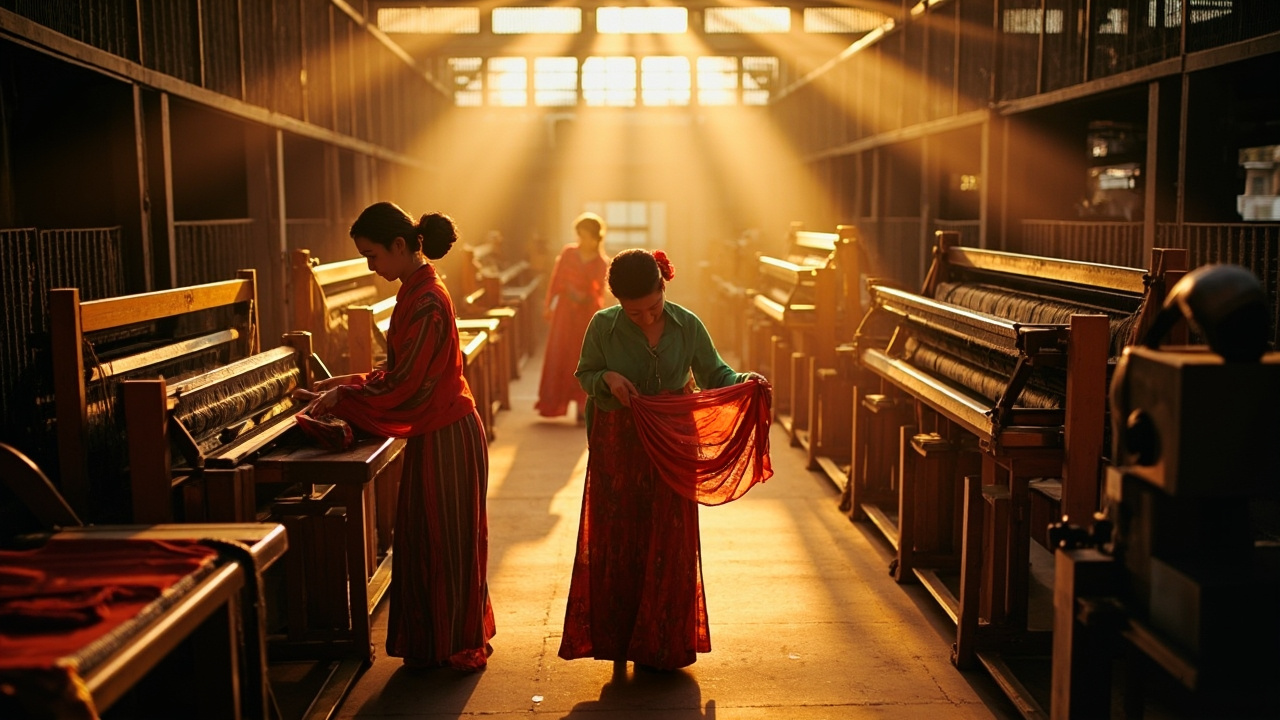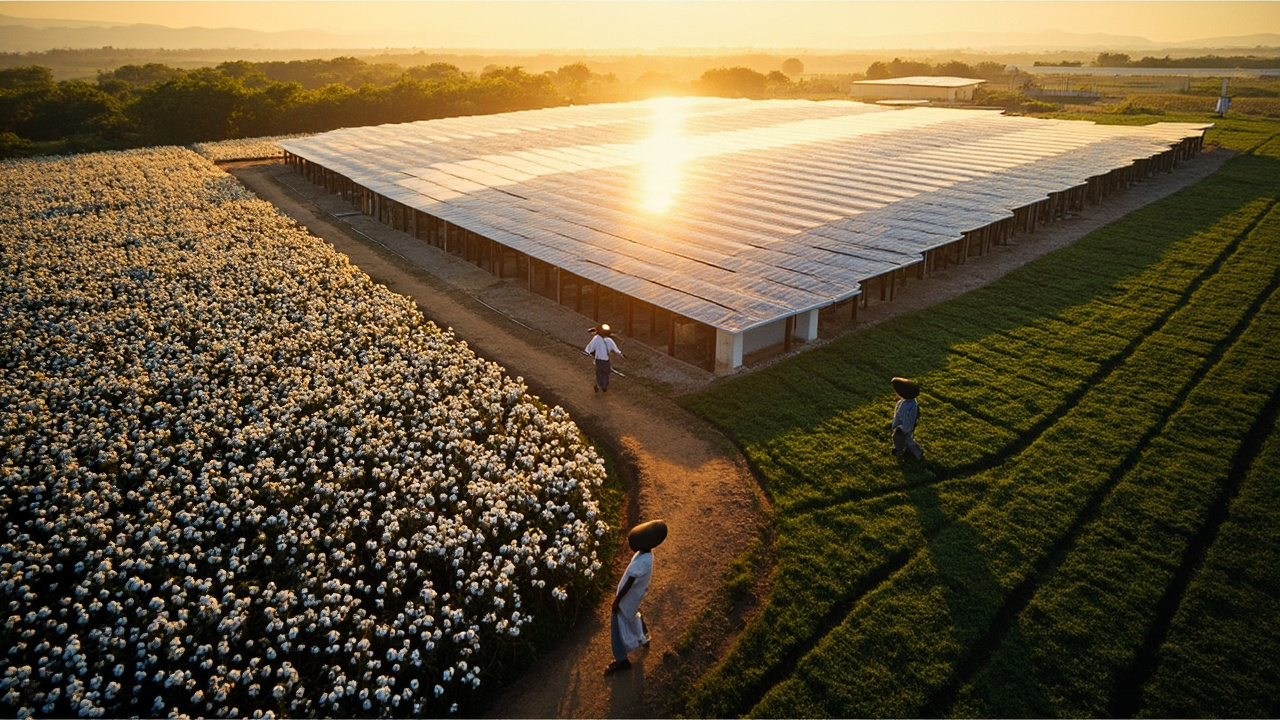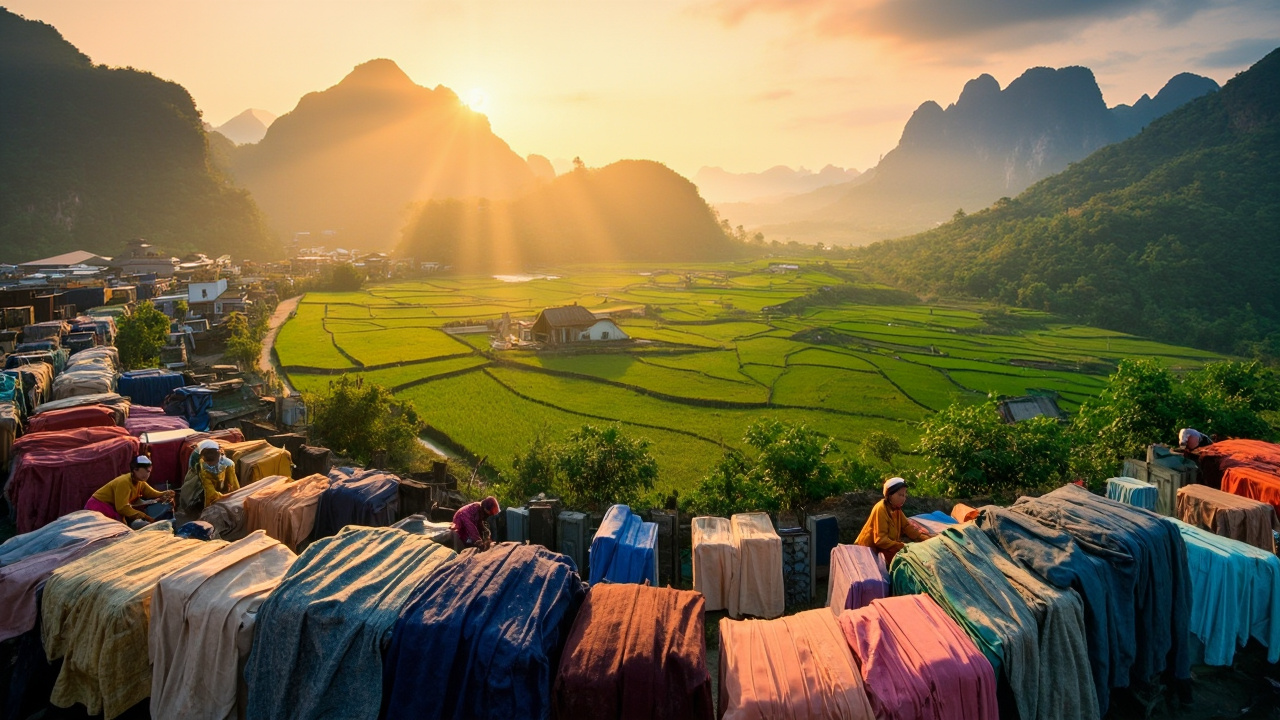Discover quality craftsmanship, competitive pricing, and eco-conscious production in Southeast Asia’s fastest-growing textile hub
Vietnam has emerged as a global leader in textile manufacturing, blending centuries-old craftsmanship with cutting-edge sustainable practices. International buyers are increasingly turning to Vietnamese suppliers for premium-quality fabrics that balance affordability with environmental responsibility. From luxurious silks to high-performance synthetics, the country’s diverse offerings cater to contemporary demands for ethical production and supply chain transparency. This narrative explores Vietnam’s journey from regional artisan hub to international textile powerhouse, revealing how its unique combination of skilled labor, strategic trade partnerships, and ecological innovation positions it at the forefront of global fabric sourcing.
Threads of Tradition Meets Modern Innovation

The Artisan’s Legacy: Guardians of Ancient Craft
In the mountain villages of Vietnam’s northern highlands, skilled artisans from ethnic minorities like the H’mong, Dao, and Thai continue to practice weaving techniques unchanged for centuries. Their hands move with practiced precision across traditional wooden looms, creating textiles with motifs that tell stories of cultural identity and historical significance. These master craftspeople employ techniques such as ikat, batik, and brocade weaving—methods requiring years of apprenticeship to master fully.
Technological Integration: Precision Meets Production
While traditional methods remain vital cultural treasures, Vietnam’s textile industry has embraced automation to meet global demand. Modern facilities now house computer-controlled looms capable of producing thousands of meters of consistent fabric daily. This technological adoption has transformed Vietnam into a textile powerhouse, strategic in the country’s manufacturing growth.
Material Evolution: The Best of Both Worlds
Vietnam’s textile innovation shines brightest in its development of hybrid fabrics. Research centers across the country have pioneered blends combining silk’s luxurious feel with synthetic durability. These innovations include fabrics with bamboo fibers offering natural antimicrobial properties while maintaining industrial strength, and water-resistant cotton blends that preserve breathability.
Government-Led Innovation: Infrastructure for Growth
The Vietnamese government has established specialized textile research centers in Hanoi, Ho Chi Minh City, and Da Nang, providing cutting-edge equipment for fiber development and testing. These facilities serve as incubators for new technologies while offering quality certification services essential for international market access.
Knowledge Transfer: Bridging Generations
Perhaps most remarkable is Vietnam’s approach to education within the textile sector. Specialized programs at institutes like Hanoi University of Science and Technology pair young engineers with village artisans, creating unique knowledge exchange opportunities. This symbiotic relationship ensures traditional techniques inform modern production while ancient crafts benefit from technological precision, creating a textile industry uniquely positioned at the intersection of heritage and innovation.
The Green Loom Revolution

Pioneering Sustainable Textile Innovation
Vietnam’s textile industry is undergoing a remarkable transformation through sustainability initiatives that honor the country’s natural resources while meeting global environmental standards.
Closed-Loop Dyeing Systems
In response to water pollution challenges, Vietnam has implemented advanced wastewater recycling systems in key dyeing facilities. The Mekong Delta textile hub now features reverse osmosis technology that reclaims up to 85% of wastewater. These systems extract dye residues and heavy metals, returning clean water to production cycles while reducing freshwater consumption by approximately 60% compared to traditional methods.
Organic Cotton Renaissance
The highlands of Vietnam have become home to Oeko-Tex certified organic cotton projects spanning over 3,000 hectares. These initiatives eliminate synthetic pesticides and fertilizers while implementing crop rotation techniques that replenish soil nutrients naturally. Farmers participating in these programs report 30% lower input costs despite initial transition challenges, creating economically sustainable cultivation models.
Harnessing Solar Power
The abundance of sunshine in Vietnam’s central region has catalyzed investment in solar-powered weaving mills. Notable facilities in Da Nang and Hue have installed rooftop photovoltaic systems generating up to 40% of their electricity requirements. This transition is reducing carbon emissions by an estimated 15,000 tons annually while providing manufacturing cost stability against fluctuating energy prices.
Circular Economy Practices
Innovative textile waste management programs are emerging throughout Vietnam’s manufacturing zones. Cutting room scraps that previously entered landfills are now collected, sorted, and transformed into composite materials for packaging or insulation products. Some mills have pioneered mechanical recycling technology that converts polyester waste into new yarn, closing the loop in synthetic fabric production.
Indigenous Natural Dyes
Research centers in collaboration with ethnic minority communities have documented over 40 plant species suitable for natural dye extraction. These include indigo from the northern highlands, mangrove bark from coastal regions, and annatto seeds from central Vietnam. These dye sources not only minimize chemical use but also create additional income streams for agricultural communities.
The convergence of traditional knowledge with modern technology is positioning Vietnam as a leader in sustainable textile manufacturing, building upon the artisanal heritage highlighted previously while preparing manufacturers for the marketplace navigation requirements addressed in upcoming sections.
Navigating Vietnam’s Textile Marketplace

Regional Specialization: Vietnam’s Textile Geography
Vietnam’s textile industry presents a rich tapestry of regional specialization that savvy international buyers can leverage. Northern Vietnam, particularly Hanoi and its surrounding provinces, excels in silk and traditional handwoven textiles. The Van Phuc Silk Village near Hanoi maintains centuries-old techniques producing premium silk fabrics with distinctive luster and durability. Meanwhile, Ho Chi Minh City and southern provinces have developed robust manufacturing capabilities for synthetic fabrics, polyester blends, and performance textiles, utilizing modern technology and economies of scale.
Central Vietnam offers specialized cotton production, with Hoi An emerging as a center for naturally-dyed cotton fabrics. The Mekong Delta region specializes in raw material processing and preliminary textile production.
Certification Landscape
Successful sourcing from Vietnam requires understanding its certification ecosystem. Most established manufacturers now maintain international certifications including ISO 9001 for quality management, ISO 14001 for environmental standards, and SA8000 for social accountability. For organic and sustainable textiles, GOTS (Global Organic Textile Standard) certification has gained significant traction, particularly among northern producers.
Documentation Verification Protocol
Buyers should implement a systematic verification process for all certification claims, requesting original documentation and cross-checking with certification bodies. Third-party verification services can provide additional assurance for high-volume orders.
Streamlined Logistics Solutions
Navigating Vietnam’s export logistics requires strategic planning. The country’s primary textile export channels flow through Hai Phong port (northern region), Da Nang port (central region), and Cat Lai Terminal in Ho Chi Minh City (southern region). Establishing relationships with logistics partners familiar with textile-specific requirements can significantly reduce delays.
Consider implementing a digital documentation system that interfaces with Vietnam’s electronic customs platform (VNACCS/VCIS) to expedite clearance processes. This approach complements Vietnam’s ongoing sustainability initiatives in the textile sector that were discussed in our previous chapter on the Green Loom Revolution.
Quality Assurance for Bulk Orders
Implementing robust quality assurance protocols is essential when sourcing Vietnamese textiles. Establish a three-tier inspection system:
- Pre-production material verification
- In-line quality monitoring at 20%, 50%, and 80% production points
- Final random sampling using AQL (Acceptable Quality Level) standards
For bulk orders exceeding 10,000 units, on-site quality representatives are recommended. Vietnamese manufacturers increasingly welcome this collaborative approach to quality assurance.
Negotiation: Cultural Considerations
Successful business negotiations in Vietnam’s textile industry blend technical knowledge with cultural awareness. Relationship-building (“quan he”) precedes transaction details. Allow time for trust development through multiple meetings and genuine interest in your Vietnamese counterparts.
Decision-making often involves collective consensus rather than individual authority, explaining longer negotiation timelines. Patience yields stronger partnerships with Vietnamese textile suppliers, ultimately supporting Vietnam’s growing manufacturing sector.
Maintain face-saving alternatives when discussing quality issues or price adjustments. Direct confrontation rarely achieves desired outcomes, whereas collaborative problem-solving aligns with Vietnamese business culture.
Final Words
Vietnam’s textile industry offers more than competitive pricing – it provides a blueprint for ethical, sustainable global manufacturing. By maintaining cultural authenticity while embracing ecological responsibility, Vietnamese producers set new standards in quality and innovation. International businesses that partner with Vietnam gain access to evolving material technologies while supporting sustainable development. As consumer demand shifts toward traceable, eco-friendly products, Vietnam’s position as a responsible textile leader continues to strengthen, creating lasting value for forward-thinking brands worldwide.
Ready to transform your supply chain with Vietnam’s premium textiles? Partner with experts who know the market inside out.
Learn more: https://tradematchvn.com/
About us
Expert consulting and matchmaking services for businesses seeking to source high-quality, sustainable textiles from Vietnam’s leading manufacturers. We provide market intelligence, supplier verification, quality control, and logistics support to ensure seamless procurement.

No responses yet